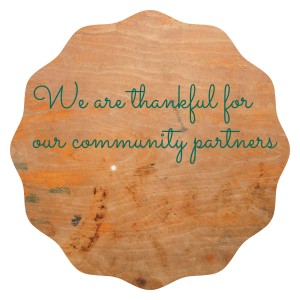[Guest Blog] Music and Movement – a great fit!
by • November 20, 2015 • Frederick Music Therapy • 0 Comments
During the month of November, we are highlighting community partners that the Noteable Progressions team has had the pleasure to work with during the last year. These partners not only help us do our jobs better, they are also true advocates for music therapy. Today, we recognize Kelly Beins, OTR/L of Occupational Therapy Consulting.
 A guest blog by Kelly Beins, OTR/L:
A guest blog by Kelly Beins, OTR/L:
What do rattles, drums, keyboards, scarves, and an exercise ball all have in common? One child…who needs music therapy and occupational therapy to help with recovery from brain injury. These things came together during a co-treat session between me and the music therapists at Noteable Progressions, because collaboration between two very different disciplines can be an effective therapeutic tool for helping to build all kinds of skills for people of all ages.
My first introduction to music therapy was as a summer intern, working in the OT Department at a long-term provincial psychiatric hospital in Canada. I assisted the music therapist during music therapy groups with adults who had chronic mental illnesses like schizophrenia, depression, and alzheimer’s. The groups were effective for helping these clients engage with other people, communicate thoughts and feelings, cope with stress, and learn to be a part of the real world again. The music therapist guided the content of the group based on who was there and what their needs were, she changed the rhythms and the songs and the words, based on the responses she hoped to elicit. I helped structure the group and encouraged individual skills by calling on certain people to complete certain tasks like passing out or collecting the song books, holding & passing the instruments, asking questions to elicit answers or doing certain movements as the songs were played. This introductory experience for me, to the potential magic of music therapy, showed me that collaborative treatment from two very different disciplines could be very effective for some clients.
My next experience working with music therapists was working as a consultant to a program serving children and adolescents with a variety of diagnoses ranging from behavioral and emotional disabilities, to learning disabilities, trauma and/or autism. My role was to assist with implementing sensory strategies as an adjunct to their core treatment program(s) and to serve as alternatives to seclusion and restraint. I worked closely with the music therapist to set up a calming room on their unit. Her role was to be my key contact for working with staff around assessment, selecting items for use in the room, use of the room procedures, and measuring outcomes. My role was to be a resource re: research and best practice models, to help with access to resources, and to offer training re: use of items that were used in the room. I implemented equipment that could offer soothing movement, touch, and visual opportunities (a rocking chair, a weighted blanket, soft cushions, flourescent light covers, access to coffee table books, and hand held visual toys like a bubble tube). She emphasized use of soothing sounds (a white noise machine, select music CD’s & player with headphones) and worked out a way to have use of the room for individual music therapy sessions. Again, this collaboration proved to be successful and because of how closely and well we worked together, many clients received a supportive service that was beneficial to individuals and the program.
My most recent collaboration with music therapists has been my work with Noteable Progressions. As an occupational therapist I am often working with children who have motor challenges, difficulties with self-regulation and social skills, and challenges with attention among other things. My goals are often related to improving physical function in parts of the body (core strengthening and postural control, hand strengthening & finger isolation or grasp & release), or in how a child uses their body (coordinating both sides of the body, increasing fluidity & automaticity of movement, eye-hand coordination, regulating force/not squeezing too hard or playing too hard/rough) or in how long a child can remain engaged in a certain activity. I use real life activities, to help children build these skills. Sometimes we play, sometimes we do school activities like printing, sorting, patterns, and math, and sometimes we use music. While I can sing some basic children’s songs to help with engaging a young child, and while I have been known to make-up songs to any made up tune, just to keep things fun, my singing voice leaves a lot to be desired and my knowledge and skills in use of music, instruments, and engaging the auditory system along with other body systems is limited, but I know it is important and I have seen it work. This is why collaborating with a music therapist for clients who are engaged more readily with music, who show motor responses more readily with music, and who need their auditory system working with the rest of their body systems can be a powerful way to effect change. Working with a music therapist means double the support for some of my clients and engagement in types of activities that I can’t provide.
Occupational therapy and music therapy can be a creative and effective way to target skills for a broad range of clients. Whether it means collaborating outside of sessions to brainstorm ways of getting carryover between the two types of therapy, or working side-by-side to co-treat in the same session. And just maybe…not likely but maybe…my singing voice will improve some day.